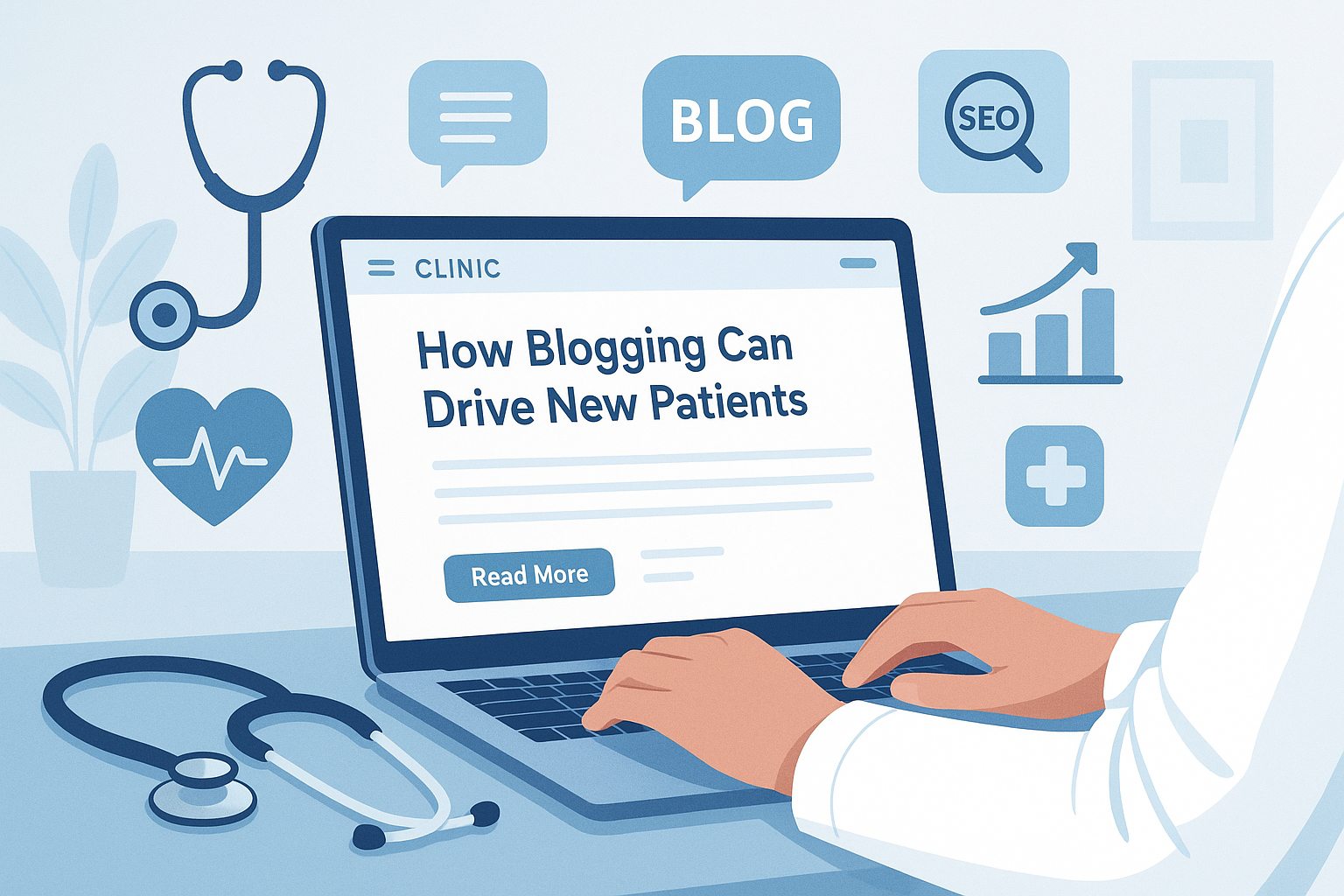Every healthcare practice wants to attract more patients—but figuring out how to make that happen can be challenging. Blogging is one of the most underutilized yet highly effective tools for driving traffic to your healthcare website and converting visitors into patients. With fresh, informative, and SEO-optimized content, you can showcase your expertise, build trust, and ultimately bolster your practice’s growth.
But how, exactly, can blogging achieve this? This post breaks down key strategies for blogging success in healthcare, along with actionable tips to implement today.
Why Blogging Matters for Healthcare Websites
Blogging goes beyond simply publishing articles. It’s about proactively engaging potential and existing patients. Research shows that companies with active blogs generate 67% more leads than those without. For healthcare providers, this means answering patients’ questions, sharing expert insights, and reassuring them about your credibility.
Here’s why blogging is a game changer for healthcare websites:
1. Improves Search Engine Rankings
A well-maintained blog signals to search engines that your site is active and provides valuable content. Blogs with targeted keywords, such as “SEO company” or “web design in Melbourne,” help your site appear higher on search engine result pages (SERPs). When a potential patient searches for “how to treat lower back pain” or “best dermatologists near me,” your blog could make your practice the top source they find.
2. Establishes Authority in Your Field
Writing on topics related to your expertise builds trust. Patients are more likely to choose a provider who demonstrates in-depth knowledge about their conditions or symptoms. For example, a blog titled “5 Tips for Managing Diabetes Naturally” shows your active involvement in health education while positioning your practice as a leader in the community.
3. Enhances Patient Engagement
Blogs provide a chance to interact with patients on an emotional and intellectual level. Personalized, relatable content (like “What to Expect at Your First Physical Therapy Session”) answers their fears and questions, making them feel connected and cared for.
4. Boosts Patient Acquisition
With optimized calls to action throughout your blog posts (e.g., “Schedule Your Consultation Today”), you make it easier for readers to take the next step. When combined with exclusive offers or guides, your blog becomes a lead-generation powerhouse.
How to Use Blogging to Attract New Patients
Setting up a blog is easy; making it deliver results takes strategy. Follow these six steps to leverage blogging for patient acquisition effectively:
Step 1: Identify Your Target Audience
Before creating content, define who you’re writing for:
- Are they parents researching pediatric care?
- Busy professionals needing quick healthcare tips?
- Athletes recovering from injuries?
Tailor your blog topics to meet their concerns.
Step 2: Focus on SEO
Search Engine Optimization (SEO) ensures your blog is discoverable. Incorporate high-value keywords naturally, like SEO company, web design in Melbourne, or condition-specific terms such as “arthritis treatment.”
Use headings, meta tags, and alt text to further optimize each post. Tools like Google’s Keyword Planner can help identify trending search terms to target.
Step 3: Write About Relevant Topics
Here are some blog ideas to start with:
- “The Truth About Food Allergies”
- “How to Choose the Best Skincare Products for Sensitive Skin”
- “10 Warning Signs It’s Time to Visit a Cardiologist”
Address frequently asked questions to provide immediate value.
Step 4: Make Your Content Skimmable
Patients often skim content for quick answers. Use concise paragraphs, bullet points, and headers to improve readability. Here’s an example of a great format:
- Introduction
- Explanation of symptoms or conditions
- Steps/tips for care
- Call to action (e.g., “Book your appointment with us today”)
Step 5: Include Tasting Notes for Patients
Yes, “tasting notes,” but healthcare-style. Offer engaging and actionable insights that patients can “digest” immediately after reading. These can include actionable tips for recovery, health hacks, or even advice for managing medications.
Step 6: Promote Your Blogs
Once your blog is live, share it where your audience spends time:
- Social Media: Post the link with an attention-grabbing caption.
- Newsletters: Email subscribers about relevant updates.
- Direct Links: Link back to your blog from FAQs or appointment landing pages.
Widening reach ensures more clicks and enhanced visibility!
Integrating Blogging into Your Practice’s Brand
If you’re still unsure how blogging fits into your healthcare branding, start small.Post one blog per month, then gradually increase your frequency based on results. Regular updates to your blog show that your practice is not only active but also invested in patient care.
Additional Tips for Blog Success
- Be Consistent: Publish at predictable intervals to build trust.
- Leverage Professional Help: If writing isn’t your thing, consider hiring SEO-savvy writers to create custom content.
- Add Visuals: Graphics, infographics, or short videos can break up text and make content more engaging.
- Update Posts: Refresh older articles with new data to keep them relevant.
Final Thoughts
Blogging is more than a marketing tactic. It’s a way to connect with patients, educate your community, and grow your practice sustainably.
